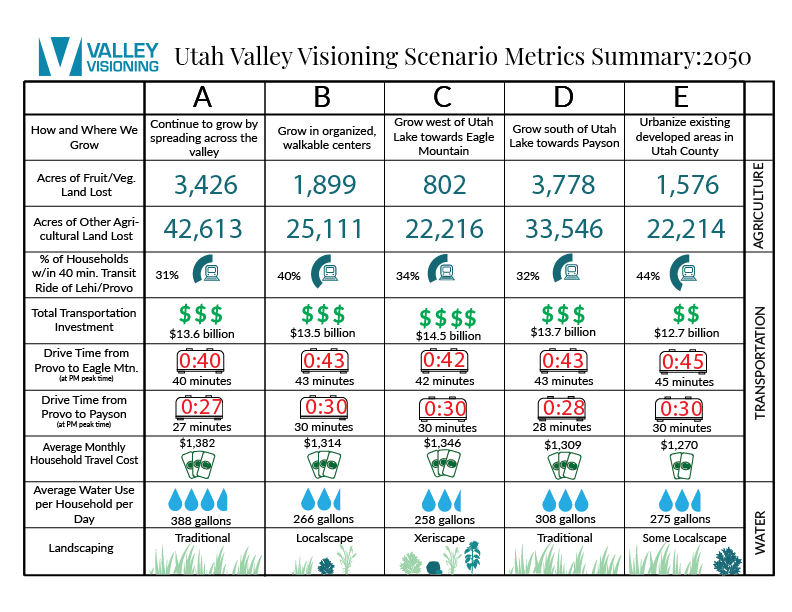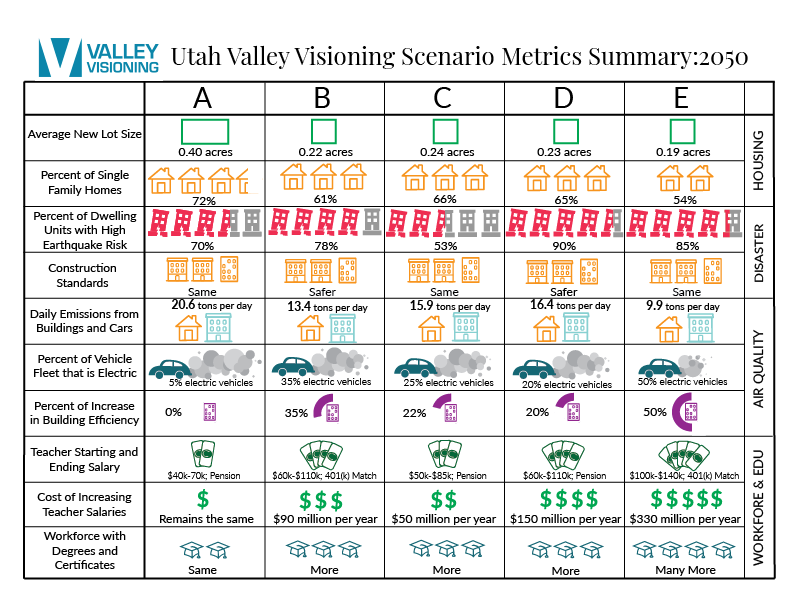
Over time cars get cleaner due to federal regulations and technological improvements, but population growth means that there are more cars on the road. People drive less due to a strong investment in pedestrian and public transportation infrastructure. Half of vehicles on the road are electric or zero-emissions due to the expansion of charging stations, incentives, and other measures. Building emissions are cut in half through higher standards for energy efficiency. Increased up-front costs may be offset over time by lower energy use. Due to all of these factors, air pollutants are produced at low levels, as shown in the chart above. In addition, greenhouse gas emissions, which contribute to climate change, are reduced by changes to the vehicle fleet and improved energy efficiency. About 40% of the county’s electricity needs are produced by local solar panels or wind turbines, further reducing greenhouse gas emissions. The average household annually produces 4.2 metric tons of greenhouse gases from building energy use and 3.2 tons of greenhouse gases from vehicle use.





